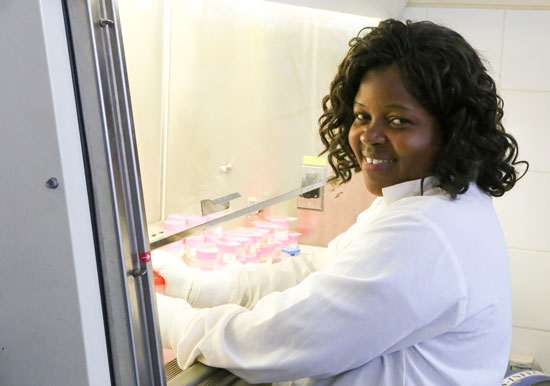
02 Apr Our 2030 Vision for the Health Workforce
This post originally appeared on the Frontline Health Workers Coalition’s blog.
Teenager Durah stretches under a lamp with a book, absorbing every word and figure. Inspired by her aunt, she wants to become a nurse. She is the future health workforce. She is who the world needs tomorrow.
Durah wants flexibility, occupational safety, and career opportunities. Responding to her community’s health needs and workplace effectiveness will contribute to her job satisfaction. As a global community, it is our responsibility to make sure this future health worker — and many others — achieves her highest potential.
To build the future health workforce, we can empower aspiring health professionals — especially youth like Durah — to excel at jobs that can help meet health system needs. We must:
- Transform health workforce education and align approaches with the latest global guidance for high-quality services. Use competency-based and community-based methods and reinforce cognitive, problem-solving skills
- Plan for health workers based on data, demographic and epidemiologic transitions, as well as historical trends, to help policymakers balance supply and demand. Understanding the distribution of health graduates and current workers helps predict where future gaps will be
- Amplify youth’s and women’s voices to shape what 21st century health jobs should be. Women are a powerful but not fully recognized force in the caregiving economy
In Durah’s village, a nurse midwife unlocks the gate at the primary health center as the sun rises. A community health worker sets off on his bicycle to visit families in a small village tucked in the hills. A pharmacist turns the sign in her clinic’s window to display “open”. Their presence symbolizes their community’s access to health services. They, and those like them, are our current health workforce. They are who the world needs today.
The midwife has delivered hundreds of babies safely and helped families plan for their prosperous futures, but she needs the latest tools and skills to remain effective. The community health worker is motivated to serve remote communities, including for malaria and patients lost to follow-up, but he needs support to track reported cases and collect data. The pharmacist prescribes drugs so that people living with HIV can live normal, productive lives, but her practice depends on a well managed central medical store.
They must be well deployed, well supported, and motivated to provide relevant and respectful services that meet standards of care. Investing in health workers helps them enhance communities’ prosperity, save lives, and make the world a safer place.
To optimize the existing workforce, we can work with country stakeholders to harness education, labor markets, and health systems to fully support today’s health workforce to be fit-for-purpose and fit-to-practice. We must:
- Align health, education, and labor market information systems and work towards implementing National Health Workforce Accounts (NHWA), which standardize sources of HRH information, including human resource information systems (HRIS), to make better informed decisions
- Improve in-service training and harness local leadership to promote high-quality, culturally and gender-competent services, such as for family planning
- Identify mentors and plan for succession so community champions can leave a legacy
- Strengthen national programs’ approaches to optimize funding, including through frontline health workers
- Innovate service delivery through differentiated models of care — especially with community-based health workers; use tools to quantify skills needs at site level to explore options
- Prepare health workers for global health security threats to make the health system more resilient and responsive to potential outbreaks, such as Ebola
The USAID HRH2030 program celebrates current and future health workers this World Health Worker Week. Now is the opportunity to make strategic health workforce investments. We cannot achieve better health without them.
Photo: A young lab technician prepares samples for testing at the Bwaila Hospital in Lilongwe, Malawi. Her presence symbolizes the community’s access to health services both now and for the future. Photo credit: Kevin Gandhi/Chemonics, 2017





